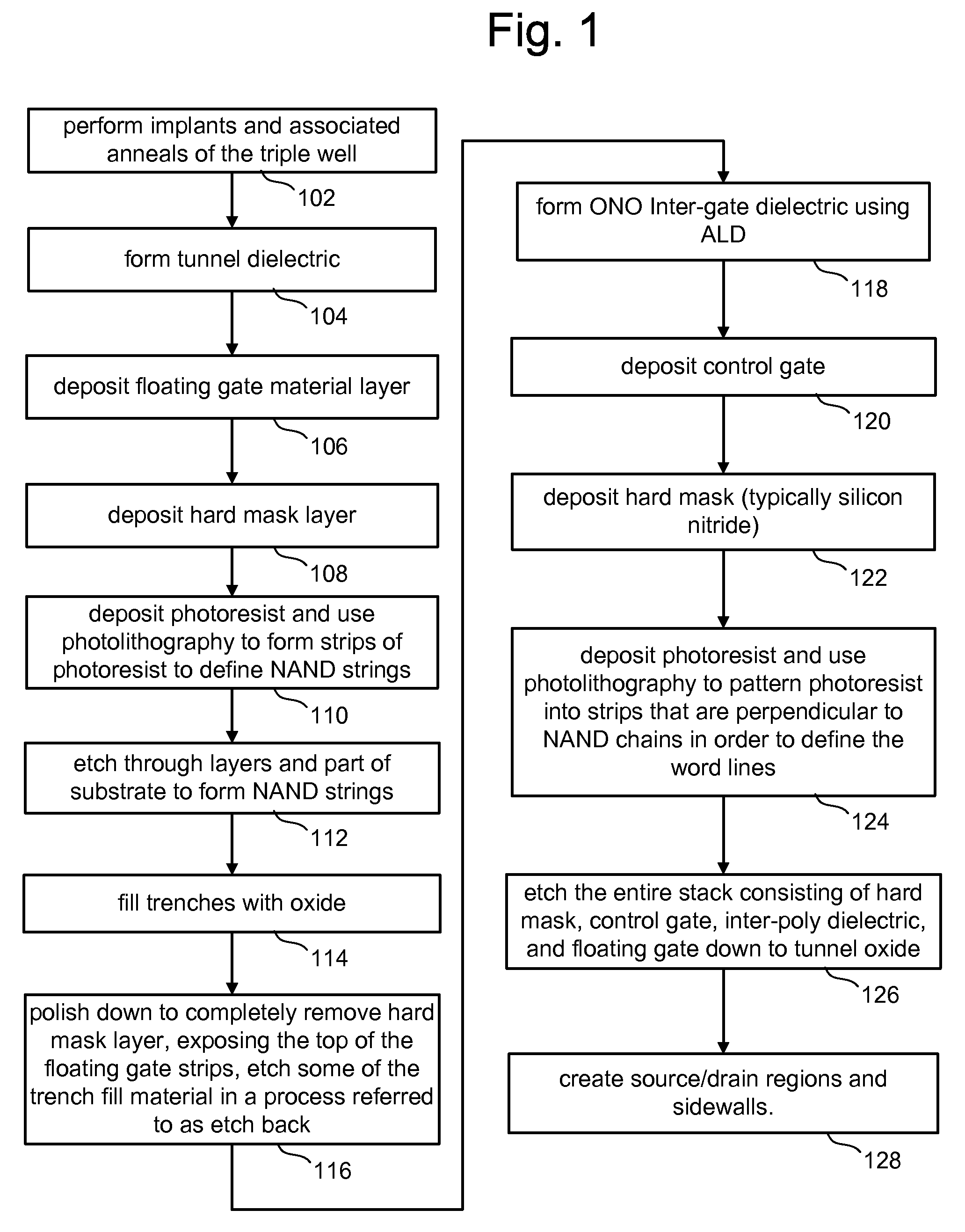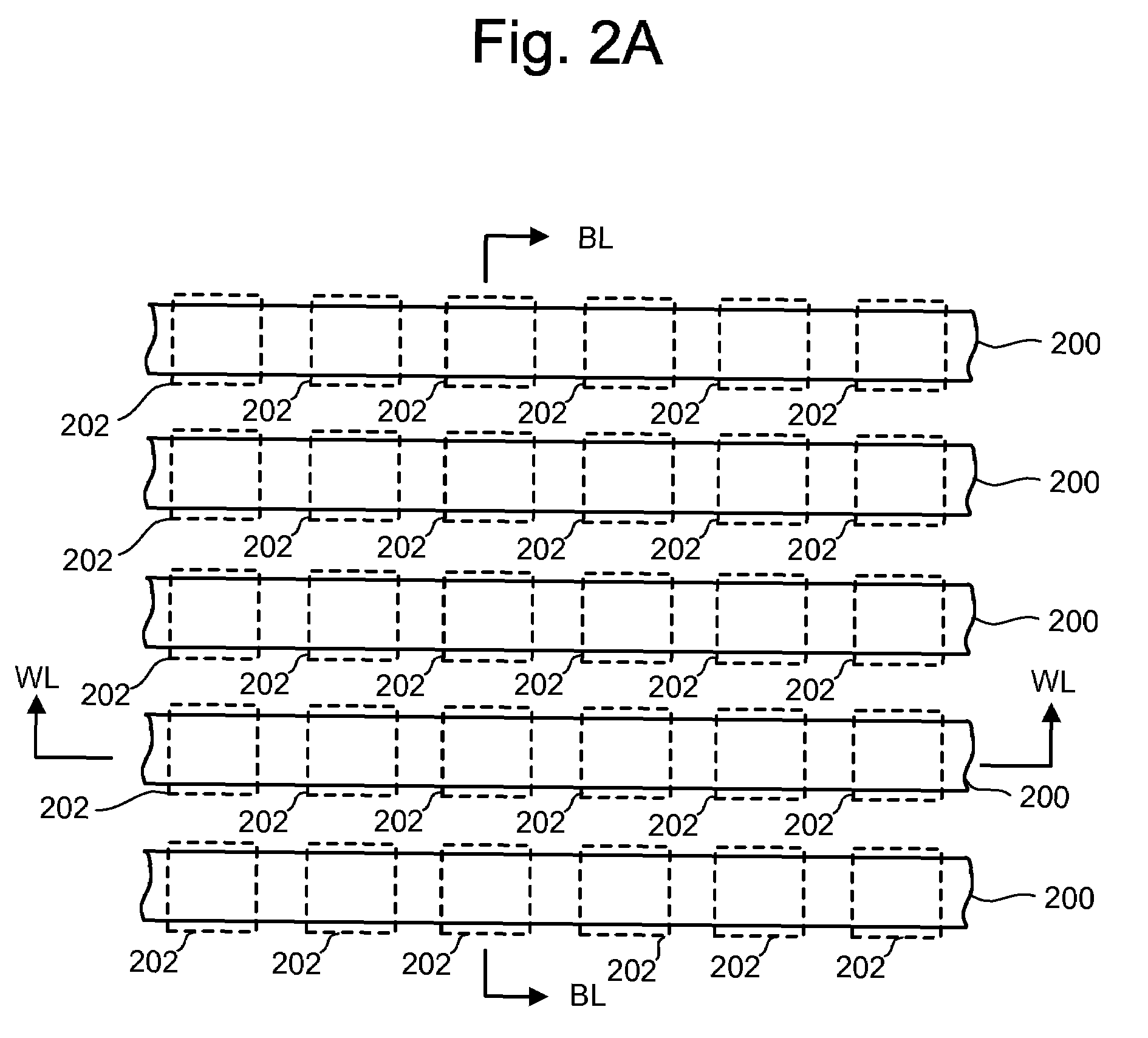Scaled dielectric enabled by stack sidewall process
a dielectric and sidewall technology, applied in the field of nonvolatile memory, can solve the problems of capacitive or electric field interference effects, corner oxidation of floating gate, corners of control gate,
- Summary
- Abstract
- Description
- Claims
- Application Information
AI Technical Summary
Benefits of technology
Problems solved by technology
Method used
Image
Examples
Embodiment Construction
[0025]FIG. 1 is a flow chart describing one embodiment of the front end of a process for manufacturing a memory cell that describes the process steps as far as forming the sidewalls. This flow does not cover the optional booster plates or fins, the gap fill of etched volumes between the stacks, or forming the contacts, metallizations, vias, and passivation. While a flash memory will consist of both peripheral circuitry, which includes a variety of low, medium, and high voltage transistors, and the core memory array, the process steps of FIG. 1 are intended only to describe in general terms one possible process for the fabrication of the core memory array. Many photolithography, etch, implant, diffusion and oxidation steps that are intended for the fabrication of the peripheral transistors are omitted (but are known in the art).
[0026]FIGS. 2A-2L will be used to explain the process of FIG. 1. FIG. 2A shows a top view of a portion of a memory array that includes floating gates 202 and ...
PUM
 Login to View More
Login to View More Abstract
Description
Claims
Application Information
 Login to View More
Login to View More - R&D
- Intellectual Property
- Life Sciences
- Materials
- Tech Scout
- Unparalleled Data Quality
- Higher Quality Content
- 60% Fewer Hallucinations
Browse by: Latest US Patents, China's latest patents, Technical Efficacy Thesaurus, Application Domain, Technology Topic, Popular Technical Reports.
© 2025 PatSnap. All rights reserved.Legal|Privacy policy|Modern Slavery Act Transparency Statement|Sitemap|About US| Contact US: help@patsnap.com



